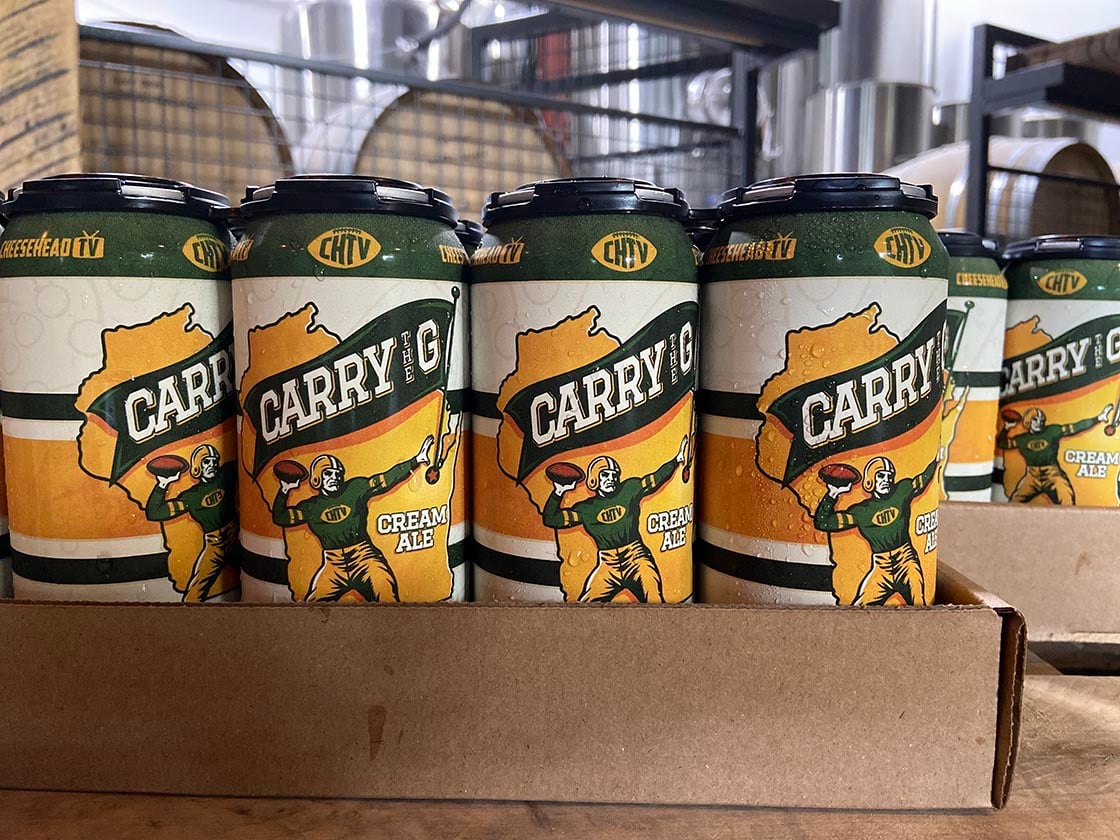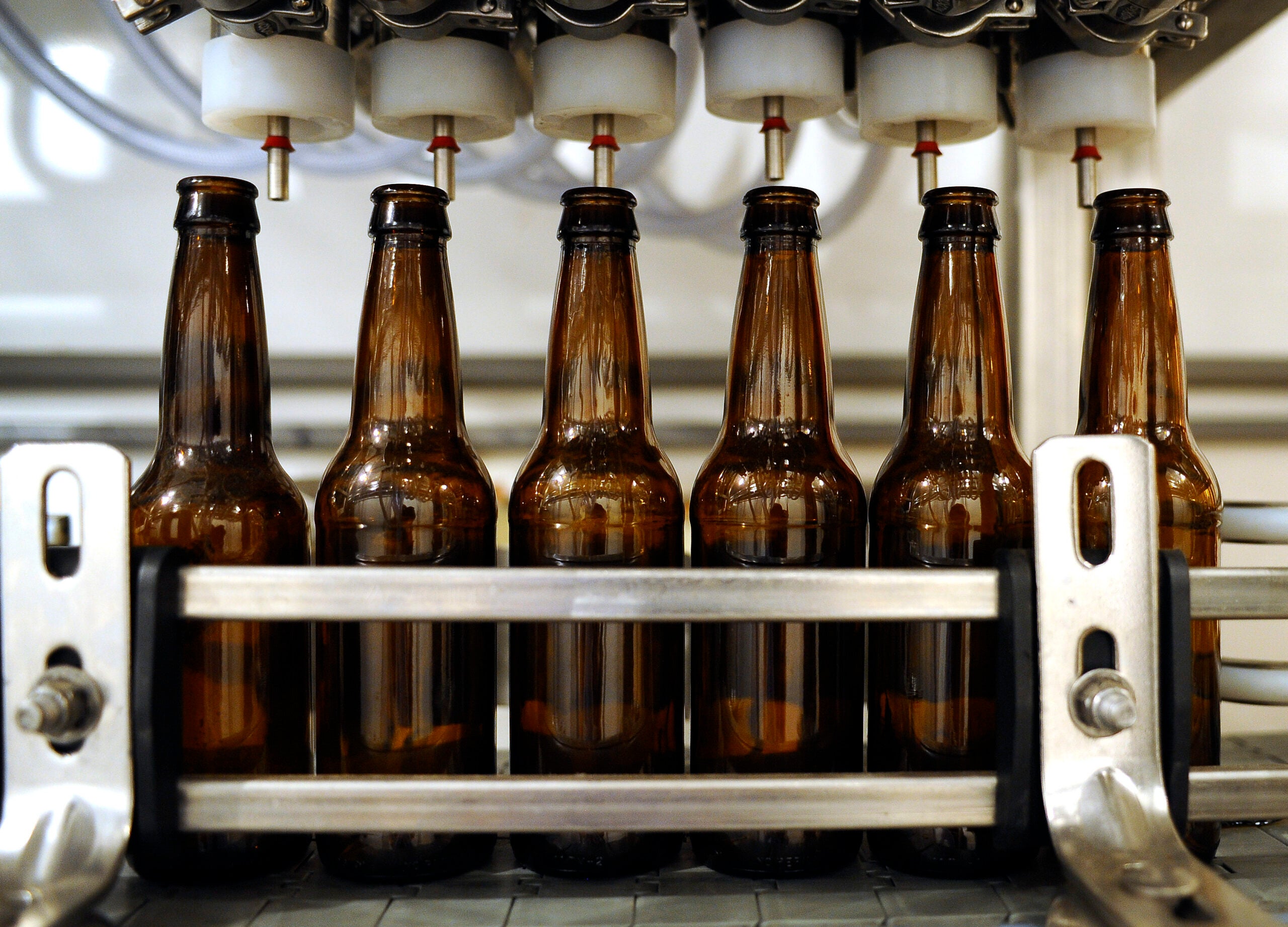Larry Meiller finds out how to brew organic, sustainable beer at home that is delicious as well as good for the environment.
Featured in this Show
-
How To Brew Organic, Sustainable Beer At Home
Many people try to buy organic food or even grow it themselves for reasons pertaining to health and the environment. But not as many people have thought about those principles in relation to what they drink.
Amelia Loftus is a writer on ecologically friendly brewing, a founding member of a brewing supply shop that specializes in organic ingredients, and the author of “Sustainable Homebrewing: An All-Organic Approach to Crafting Great Beer.” She said her delicious organic beer can be made in a sustainable way at home.
Her commitment to organic and sustainable brewing comes from growing up on a homestead in Vermont and, she said, “Being in touch with the land from my earliest memories.”
Loftus once worked as an environmental activist, but stopped after she said she decided that she “wanted to be part of the solution.” For her, that meant exploring her love of beer and joining with other homebrewers to learn the craft and start an all-organic homebrew supply company.
Loftus said that all of the key ingredients that make up a batch of homebrewed beer — barley malt, yeast, hops, as well as herbs, spices and other flavor-enhancers — are available as organic products, though it may take some research to find a source. While she encourages brewers to support local businesses, she said that in some cases, depending on location, it may be necessary to do some shopping online.
Organic ingredients are important to Loftus, but so is sustainable brewing. Her goal is achieving a zero waste process — and even if an effort falls short, she said that it’s still a more responsible approach.
Some of the ways Loftus says a homebrewer can avoid waste:
Buy ingredients in proper quantities to reduce waste.
Cook using spent grain. In her book, Loftus includes recipes for everything from Double Chocolate Spent-Grain Brownies to Spent-grain Rustic Rye Bread and even dog biscuits and poultry feed.
Reuse yeast. The layer of “goo” left in the bottom of the fermenter can be used for a second brewing as long as all the surfaces it may touch are clean. Loftus recommends washing the yeast before the second use.
Use up spent yeast in the kitchen. A yeast broth is one option, as is a yeast spread, which is similar to the brand name products Vegemite and Marmite.
Recycle brewing water. The hot water that is used to sterilize the wort chiller can be used for household cleaning or laundry. Also, there’s no need to heat the water a second time if it is funneled immediately.
Use spent ingredients in the garden. Cooled water, of course, can be used to irrigate plants, and spent grains, hops and yeast can all be added to the compost pile or to a worm bin.
Of course, the best part of the process is the beer itself. The two recipes featured below are especially well-suited for those new to homebrewing: Pale Rider Ale, and Redwood Summer Ale.
Recipes excerpted from Sustainable Homebrewing (c) Amelia Slayton Loftus. Used with permission of Storey Publishing.
Pale Rider Ale
This style of beer was made famous by Sierra Nevada Pale Ale, and has become one of the signature beers of the United States. This beer helped to spark the craft brew renaissance, from which we enjoy wonderful benefits today. At the time it was a beer with a lot more flavor and character than most beer drinkers were used to, and this helped propel it toward success. The beer is slightly sweet and malty, with a hint of caramel and toasted bread. The hop nose is distinctively citrus, with hints of pine and spice. For many homebrewers a good pale ale is a great go-to beer. When in doubt brew this one, and tweak the recipe just a little each time to perfectly suit your own taste to make it your own!
Recipe for 5 U.S. gallons
Original Gravity: 1.054
Final Gravity: 1.010–1.014
Total AAU s: 24
Total IBUs: 39
ABV: 5.4 percent- 8 oz. crystal 20L malt, crushed
- 4 oz. crystal 40L malt, crushed
- 6 pounds pale dry malt extract
- 1 oz. (8 AAU) Perle pellet hops (26 IBU) Boil 60 minutes
- 1 oz .(8 AAU) Cascade pellet hops (13 IBU) Boil 15 minutes
- 1/2 teaspoon Irish moss Boil 15 minutes
- 1 oz. (8 AAU) Cascade pellet hops Add at flameout
- Yeast: White Labs 001 California Ale or Wyeast 1056 American Ale
- Priming Sugar: 4 oz corn sugar
STEEP
Mix the grains with at least 2 quarts of water, or fill a grain bag and place it in your brew pot filled with water. Gently heat to 150 degrees (66 degrees Celsius), and steep for 15 to 20 minutes.
Strain all the liquid from the grains. Add enough water to the wort to fill the brew kettle; the total volume should be 5.25 to 5.5 gallons (adjust for your brewing system). Heat to just before boiling, add the extract, and dissolve completely.
BOIL AND COOL
Bring to a full rolling boil, then add the Perle hops. Boil for 45 minutes. Add 1 ounce of Cascade hops and the Irish moss. Boil for 15 minutes. At the very end of the boil, add the rest of the Cascade hops, stir well, then turn the heat off. Cool to 65 to 70 degrees (18 to 21 degrees Celsius). Transfer to a sanitized fermenter, and aerate well.
PITCH, FERMENT AND BOTTLE
Add the yeast. Ferment for 10 to 14 days.
Rack to a secondary fermenter after 5 to 7 days, once fermentation has slowed, if desired.
Boil the priming sugar in 1 cup of water, and cool to 70 degrees (21 degrees Celsius). Stir the sugar gently into the beer, then bottle it. Let the beer condition in the bottles for 14 to 21 days.
ALL-GRAIN ADAPTION: PALE RIDER ALE
Omit the malt extract. Add:
- 9 pounds pale 2-row malt, crushed
- 4 more ounces crystal 20L malt, crushed
- 4 more ounces crystal 40L malt, crushed
Instead of steeping, do a full mash as follows:
Heat 3.75 gallons of water to 170 degrees (73 degrees Celsius). Add all the grains, and mix well. Allow to rest for a few minutes, then adjust the temperature to 151 to 153 degrees (67 to 68 degrees Celsius) if needed. Hold this temperature for 45 to 60 minutes, or until starch conversion is complete. If possible, just before lautering, heat the mash to 165 degrees (74 degrees Celsius). Sparge with 3.5 gallons of water at 168 degrees (76 degrees Celsius). Transfer the wort to the brew kettle, then proceed with the boil, fermentation, and bottling.
Redwood Summer Ale
A good red ale is a celebration of fine malts and the fruitier side of hops. A liberal dose of caramel malts gives the beer a malty sweetness, and the Vienna malt adds a bit of toast flavor. Combined with hops that exhibit a fruity and citrus character, this beer is a real thirst quencher that comes across as “wetter” than most beers. This recipe highlights some of the newest organic hops that have become available. If you are unable to obtain them, see chapter 9 for a guide to substituting hops.
Recipe for 5 U.S. gallons
Redwood Summer Ale 237
Original Gravity: 1.052
Final Gravity: 1.010–1.014
Total AAU s: 23
Total IBUs: 35
ABV: 5.3 percent- 8 oz. Vienna malt, crushed
- 6 oz .crystal 60L malt, crushed
- 3 oz. Cara-Munich malt, crushed
- 3 oz. crystal 120L malt, crushed
- 2 oz. Carafa II malt, crushed
- 7 lbs. pale malt extract syrup
- 1/2 oz. (7 AAU) American Bravo whole hops (20 IBU) Boil 60 minutes
- 1/2 teaspoon Irish moss Boil 15 minutes
- 3/4 oz (6 AAU) English Challenger whole hops (9 IBU) Boil 15 minutes
- 1/2 oz (5 AAU) American Citra pellet hops (6 IBU) Boil 10 minutes
- 1/2 oz (5 AAU) American Citra pellet hops Add at flameout
- Yeast: White Labs 001 California Ale or Wyeast 1056 American Ale
- Priming Sugar: 4 oz. corn sugar
STEEP
Mix the grains with at least 2 quarts of water, or fill a grain bag and place it in your brew pot filled with water. Gently heat to 150 degrees (66 degrees Celsius), and steep for 20 to 30 minutes. Strain all the liquid from the grains. Add enough water to the wort to fill the brew kettle; the total volume should be 5.25 to 5.5 gallons (adjust for your brewing system). Heat to just before boiling, add the extract, and dissolve completely.
BOIL AND COOL
Bring to a boil, and add the Bravo hops. Boil for 45 minutes. Add the Irish moss and the English Challenger hops, and boil for 5 minutes. Add 1/2 ounce of American Citra hops, and boil 10 minutes. At the very end of the boil, add the remaining 1/2 ounce of American Citra hops, stir well, and turn the heat off.
Cool to 65 to 70 degrees (18-21 degrees Celsius). Transfer to a sanitized fermenter, and aerate well.
PITCH, FERMENT, AND BOTTLE
Add the yeast, then ferment for 10 to 14 days. Rack to a secondary fermenter after 5 to 7 days if desired. Prime the beer, and bottle when fermentation is complete. Allow to condition for 14 to 21 days.
ALL-GRAIN ADAPTATION: REDWOOD SUMMER ALE
Omit the malt extract. Add:
- 8 lbs. pale 2-row malt, crushed
- 2 more oz. crystal 60L malt, crushed
Instead of steeping, do a full mash as follows:
Heat 3.75 gallons of water to 172 degrees (74 degrees Celsius). Add all the grains, and mix well. Allow to rest for a few minutes, then adjust the temperature to 151 to 153 degrees (67–68 degrees Celsius) if needed. Hold this temperature for 45 to 60 minutes, or until starch conversion is complete. If possible, just before lautering, heat the mash to 165 degrees (74 degrees Celsius). Sparge with 3.5 gallons of water at 168 degrees (76 degrees Celsius). Transfer the wort to the brew kettle, then proceed with the boil, fermentation, and bottling.
IRISH RED ALE
If you prefer a taste from the Emerald Isle, this recipe can be easily adapted to an Irish-style red ale with three very simple changes.
Remove the Cara-Munich, and increase the crystal 60L to 8 ounces and the crystal 120L to 4 ounces.
Omit the Citra hops, and reduce the Challenger hops to 1/2 oz. (4 AAU).
Use Irish Ale yeast instead of American Ale yeast.
238 Redwood Summer Ale
Since the Irish Red style is drier and less hoppy, the reduction of caramel malts and hops will bring this into the right style range, and of course Irish Ale yeast is a must.
Episode Credits
- Larry Meiller Host
- Judith Siers-Poisson Producer
- Amelia Slayton Loftus Guest
Wisconsin Public Radio, © Copyright 2024, Board of Regents of the University of Wisconsin System and Wisconsin Educational Communications Board.


